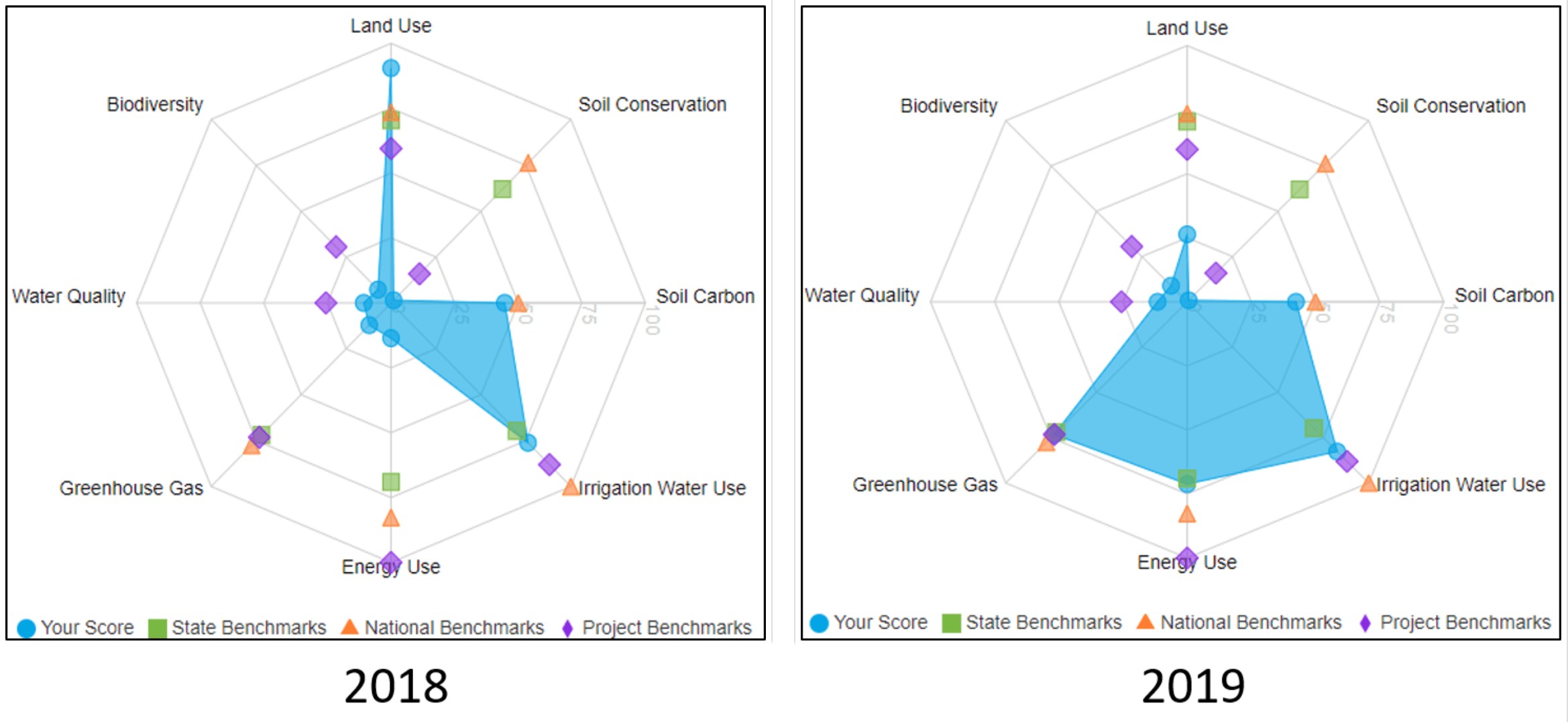The muddy waters of what is considered “sustainable” are clearing up with the implementation of a new calculator that gives agricultural producers a reliable method to quantify a farm’s sustainability.
As consumers become more inclined to purchase products that are marketed as “sustainable,” there is growing pressure on the agricultural industry for increased transparency and traceability within the supply chain leading all the way back to the origin of a product — the farm.
Until now, there has not been a reliable mechanism for measuring sustainability in the field. With recent advancements in technologies, a multistakeholder initiative, Field to Market: The Alliance for Sustainable Agriculture, has been at the forefront of the effort to develop a science- and outcomes-based approach to quantifying the sustainability of a farm.
After more than a decade of research, the alliance has developed a free, online tool, the Fieldprint Calculator, that translates yearly crop management practices into quantitative ratings based on eight indicators: land usage, energy consumption, water quality, soil conservation, greenhouse gas emissions, soil carbon, irrigation water use and biodiversity.
Enter Kaylyn Groce Reagin, University of Georgia Cooperative Extension cotton and peanut sustainability educator.
With funding from Cotton Incorporated and the Georgia Peanut Commission, Reagin is part of an ongoing research study with the UGA Integrative Precision Agriculture program to help farmers use the Fieldprint Calculator to improve their sustainability scores over time.
“Largely, farmers have always been conscientious about the environment, but by tweaking their existing systems to improve each of the metrics outlined by the alliance, growers expand their options to do business with companies who are committed to sourcing sustainably,” Reagin said.
Each year, Reagin and a group of county Extension agents visit each farmer collaborator — 45 farms — to collect and enter field data into the calculator. Once data is analyzed the calculator generates, a web-like graph called a “spidergram” that displays the scores for each sustainability metric for the previous crop year. She visits with each farmer to go over the data and talk about what specific changes can be made to improve scores for each metric.

Growers gain a better understanding of their progress from year to year by seeing side-by-side comparisons and how their scores compare to state and national benchmarks. If a grower’s scores differ dramatically from one year to the next, they can examine what changed in their management procedures that year or look into whether meteorological conditions played a part in those discrepancies.

Reagin said while some farmers are initially hesitant about having to meet eight distinct metrics, they generally find that by modifying one management practice, such as incorporating cover crops between cash crops, they increase their scores across several measures.
An element of some neighborly competition has emerged among the growers, Reagin added. “It’s funny how some of the farmers want to know what their friends’ scores were, and I think that friendly competition helps motivate them to make changes here and there to get a leg up on the upcoming year.”
For each year over the next three years of the project, county Extension agents will help identify and invite five new farmers to participate in the research. The goal is to establish accurate baseline data specific to Georgia that will help set long-term state benchmarks for cotton and peanut production.
Eventually, Reagin hopes this research will expand to include other major commodities in the state.
“The truly inspiring thing about this initiative,” Reagin said, “is that by making progress in each sustainability metric, farmers not only improve their bottom line, but they’re ensuring the longevity of the farm for future generations, and from what I can tell, that’s the thing these farmers are most excited about.”
To learn more about this research and other initiatives from UGA’s Integrative Precision Agriculture program, visit precisionag.caes.uga.edu. To learn more about Field to Market’s Fieldprint Calculator, visit fieldtomarket.org.
By: Emily Cabrera for CAES News




